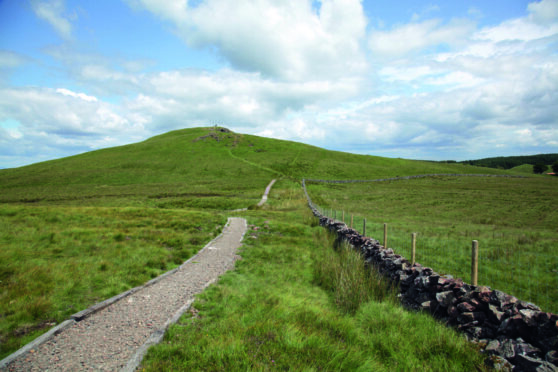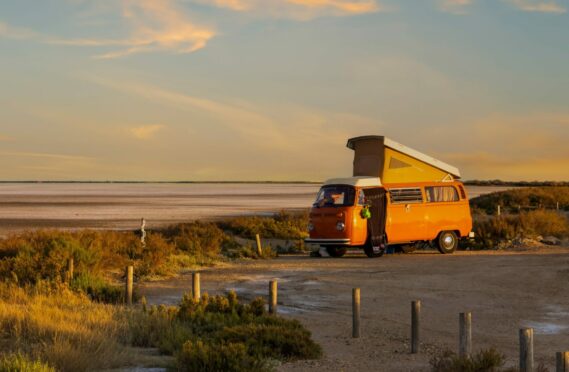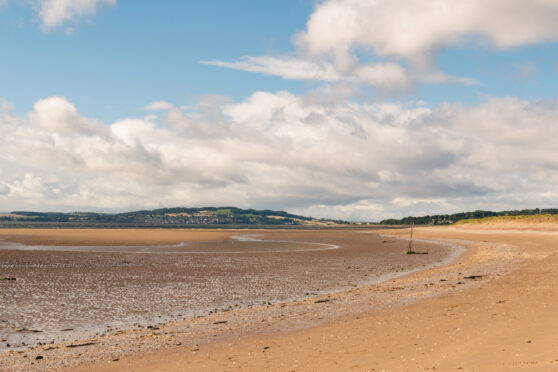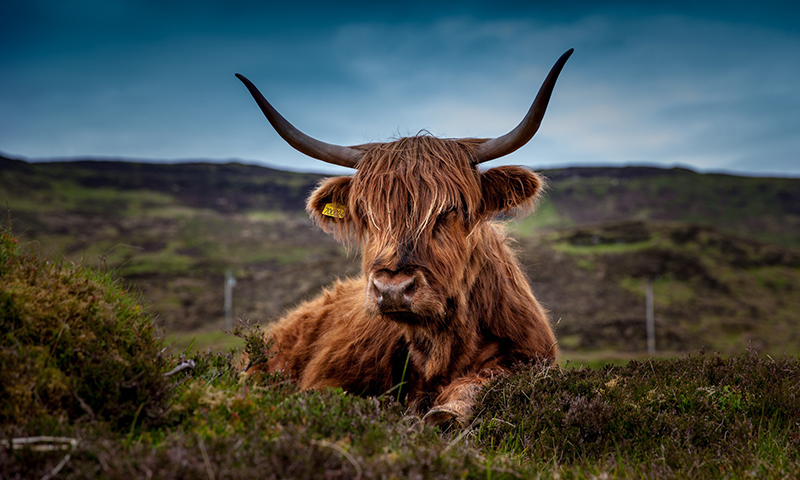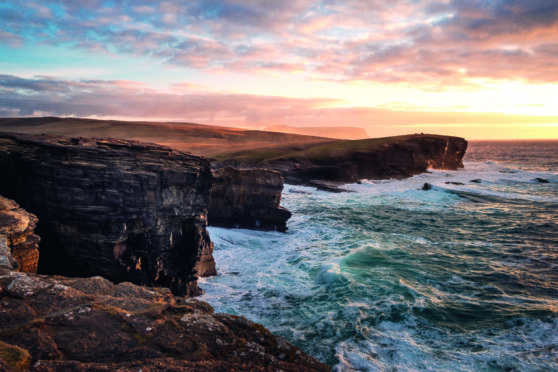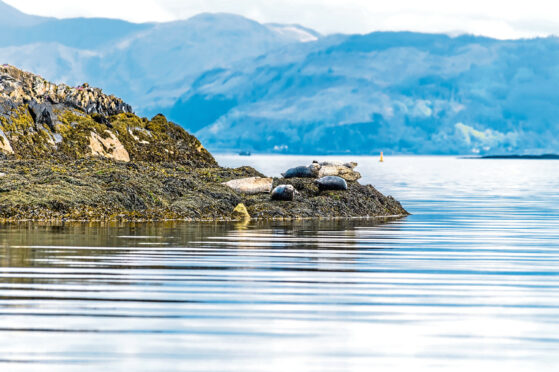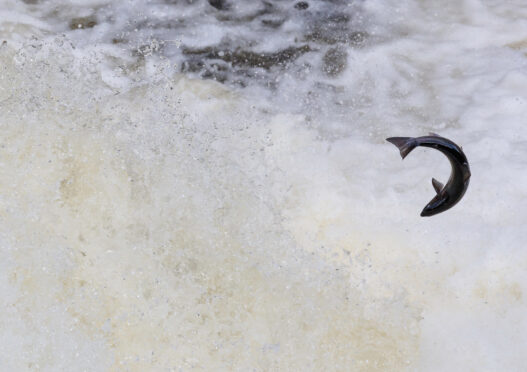
There is a hole in the river, a hollow gouged out during the ice age that has since become a broken, rock-walled sink.
A landmark headwall rears above it, and it is this that the salmon – and the river – must negotiate. The river divides around it to left and right.
So, crammed between the broken ends of the wall and its alder-lined banks, the river tumbled sideways into the sink by way of 10 separate falls that collided and mingled in joyous reunion moments later in the depths of the sink under the wall, and the colour of that reunited river was sunlit snowdrifts.
The river’s problem now was how to get out again. Almost all of it was forced into a narrow channel of imponderable depth where the curved wall of the sink’s downstream edge had long since burst apart.
That channel, just a few yards wide, was suddenly commanded to bear the burden of almost the entire river, which was 20 times as wide before it hit the headwall, and the resultant volume, speed and power would reduce you and me to ruins, broken into many pieces.
Yet it was this channel the salmon must swim through – upstream – to effect the explosive jump from the innermost depths of the sink that would carry them to quiet waters above.
Deep underwater, the Atlantic salmon powered forward with certainty, knowing the deeper it went, the less frenetic the water; that the line it held through the channel was also the line it must hold through the sink, as this line would angle the trajectory of the salmon’s jump directly towards the widest of the falls, the one nature had chosen for this singular fish.
The salmon’s self-confidence in its ability to hold that line without deviation was justified. Although the water pressure is at its utmost down there, the salmon has the power, the shape, and a faith which moves mountains and silences roaring rivers – and these fuse into unstoppable energy.
From the bottom of the sink it built a new momentum that tilted upwards until it was all but vertical, then burst the water apart and headed for the daylight. It knew – or remembered! – there is a shelf two-thirds of the way up the fall to the right of the headwall, and that was its only chance. The explosion was calculated to thrust it up and out of the throat of the roaring water.
But Glen Orchy’s falls tend to be long rather than high; this complex of 10 falls is the only one where the salmon is challenged by both height and length. Height to clear the submerged colosseum of the sink and its chaotic waters, length to reach the ledge where a salmon has a chance of holding still long enough to gather new momentum and go again.
The salmon’s mind is mysterious to me. Its destination is never in doubt, nor is its ability to find its way. This particular salmon’s journey began the moment it decided it was time to go home, thousands of miles out in the Atlantic. That journey overcame innumerable hazards – contrary currents, warming seas, predators, ships, nets, and plastic in all its grotesque forms.
Yet, it knew it must find the island-strewn west coast of Scotland, then from out of that strewment, it must select Mull. Having found it, it must decide how to by-pass it – the north coast through the Sound of Mull, or the south coast and the Firth of Lorn?
A good map or a natural vantage point like the high ground of Lismore would suggest that the Firth of Lorne is the obvious choice, because it leads more naturally to what follows. But, is there anything at all obvious about the return of the Atlantic salmon from mid-ocean to the fragment of moving water where it was born?
I have thought about this quite hard, and I can think of nothing about the process that I can point to and say, there, that bit’s obvious. Except that only by arriving at that same fragment of water far up some tributary of the upper River Orchy can that fish perform the single task for which it is hard-wired by nature: to be part of the process of producing the next generation of Atlantic salmon.
It either dies in the attempt, or it succeeds precisely because it is an Atlantic salmon, and the demands of its whole life’s journey are dedicated to this here and now.
Nature asks a lot of this fish.
So say it chooses the Firth of Lorn option then swings north up Mull’s east coast. Why would it then resist the wide open jaws and the tidal pull of the Lynn of Lorne and Loch Linnhe beyond? Why instead seek out the narrows of Connel, the Falls of Lorne beyond and the first sinuous miles of Loch Etive? And then, with all the wild world at its disposal, how does it identify the unremarkable entrance into the skinny little River Awe? The River Awe is about five miles long and serves only to allow the waters of mighty Loch Awe to make their way to Loch Etive and the ocean. So now, how tempted do you suppose the salmon is to turn south and explore the longest freshwater loch in the land, the 25 miles of Loch Awe, one of the natural jewels of Argyll?
The salmon resists because it knows where it is going and in that, literally, it has no choice. So, in pursuit of its allotted task, it swims up the loch, crosses the very top, then leaves it again by its north-east corner. It has found the River Orchy.
There are a handful of relatively low-lying, relatively douce miles of Strath Orchy before the salmon finally veers north-east into the instantly turbulent and pulse-quickening river of Glen Orchy. From here it will have alders for company every mile of the glen for they line and shade both banks in single file with more than a hint of a guard of honour about them.
It is nothing less than a prodigal Atlantic salmon deserves on the last leg of the final homecoming. Welcome home to Glen Orchy of the Falls!
In the midst of the 10 falls, it seems as if a torpedo was on the move. At last, the fish was there and all but vertical, canted a few degrees forward, the tail winding up the momentum even as it finally exploded from water into sunlight and spray, and oh how it glittered in those few seconds of something like flight.
And then it seemed to reach forward, its bodily attitude lowered towards the horizontal, and it strained its every phenomenal resource into a last thrust of forward motion and the waterfall seemed to rise to meet it. It hit the wide ledge squarely in the middle and it held on where it landed, and it did not slide back.
Suddenly, in the world of the Atlantic salmon, the roaring and boiling and water-furies of the sink were behind it. In its own time, it would find the second momentous thrust, the lesser explosion, and it would cruise upstream and away from the tug of the last great obstacle in its path.
This is what the salmon is good at, and the golden eagle-like control that comes with swimming upstream reasserts itself. A deep pool lies in an eddy of the bank. Alders cast their shadows along every yard of it. Perhaps this is where the salmon slides into the gloom.
Draws breath.
Rests.
Into the wild: jimcrumleynature.com

Enjoy the convenience of having The Sunday Post delivered as a digital ePaper straight to your smartphone, tablet or computer.
Subscribe for only £5.49 a month and enjoy all the benefits of the printed paper as a digital replica.
Subscribe